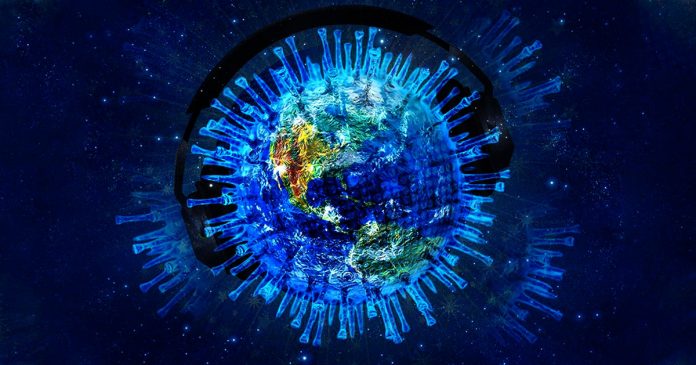This article is written by Aporva Shekhar pursuing B.B.A.L.L.B. from KIIT School of law. This article analyzes the impact of the second wave of COVID and its various facets.
Table of Contents
Introduction
After the eventual decrease in the spread of COVID-19 during late 2020 the country was starting to get back to its normal state and people all around the country became complacent and stopped following the prevention norms. Warnings of the impending second wave of infection fell on deaf ears and this incognizance led to a rapid spread of this deadly malady once again. Only this time it decimated the country with the sharp increase in cases from mid-march, many people and businesses who were trying to cut the losses borne last year were forced to shut down their operations again. The lack of a robust medical infrastructure and the increase in preventable infections choked up the health system, causing even more avoidable deaths than the infection itself. The collapse of one system after another had a cascading effect over the entire country bringing it to a standstill, and the desperate families and people affected had no recourse left to preserve their lives.
Impact of the second wave on the functioning of institutions of government
The decrease in the infection rate when the pandemic first started was due to the nationwide lockdown that was declared on 25th March 2020 by the central government which had garnered appreciation internationally. But the lack of coordination between the authorities in the second wave worsened its impact on the country. The state government has jurisdiction in matters of health as it is under the state list as per the Constitution of India and the union government should have no jurisdiction in this matter. But it is evident that several states in our country fall short on technical expertise and resources required to facilitate the necessary health measures. Renowned medical organizations and institutes have only occupied an advisory role to the government and combined with several administrative hurdles the response to the second wave paled in comparison to its severity.
In a country with a mammoth population like India with widespread inequity, illiteracy, varying access to basic necessities and health care facilities, it becomes almost impossible to provide adequate healthcare to everyone. And with the sharp rise in infections and the gradual shutdowns from state to state a healthcare system that had not bounced back from the previous year was buckling under the pressure of critical patients. The influx of COVID-19 infected patients diverted the already scarce health care resources from the general afflicted patients which caused even more unnecessary deaths. The localized efforts of the state governments were not enough to deal with the crisis and the central government reserved the option for lockdowns as a last resort only to strengthen the hard-hit economy.
During the initial spread, urban areas were most affected and the rural economy continued to thrive with good yields, cheap labour, and less stringent lockdown measures. But in the second wave, rural areas reported more cases than the urban areas and this eventually led to the loss of employment for the rural sector which accounts for almost 58%. The hospitality and tourism sector also bore the brunt of this economic slowdown, just when the cases were slowing down and the sector was gearing up to recover losses they skyrocketed again and the only purpose the hospitality sector could provide for now was isolation centres. The manufacturing and service sector are so closely associated and in both the waves of virus spread they suffered the consequences of lockdown. Due to this pandemic, India has seen the most severe contraction in its GDP since independence, measuring a contraction of 7.3 percent.
Legal concerns
The second wave of the pandemic has ushered the country into a public health crisis of gigantic proportions forcing the government authorities to face an unpredictable enemy. The economic, social, and health issues that this second wave has raised have forced the executive to tough challenges. The surge of cases in the second wave-exposed the shortcomings of authorities as well as our crumbling medical infrastructure.
With the evident collapse of executive control over the crisis, the judiciary was forced to tackle the issues. The courts were dealing with the issues faced by the people, ranging from a shortage of essential supplies to medical equipment by fulfilling its role and acting as a check and balance against the other arm of the government. And even though the Indian judiciaries are already overburdened with pending cases, the courts did their part to facilitate dialogue between the common people and the executive by way of advice and decisions. The courts have fulfilled their constitutional duties by ensuring the implementation of regulations and asking questions and making the government agencies accountable for their conduct and operation in this time of crisis.
Problems related to virtual court hearings : addressing accessibility
India has progressed a lot since independence with many technological advances incorporated into our society, but the harsh truth is that the majority of the population still lacks basic access to uninterrupted electricity and internet connectivity. And the forced shift from physical hearings to virtual ones has not only affected the litigants but also the advocates. A large number of people had to get acquainted with new procedures related to virtual hearings all the while maintaining all procedural requirements. This has been a challenge for many legal professionals who do not have access to a good internet connection and do not possess the knowledge or skills required to use digital platforms effectively.
Another issue with accessibility-related to virtual hearings is that the proceeding is only for the advocates, the parties involved, and the judge, and this hampers the concept of a public hearing. The other problem with virtual hearings is that they might compromise sensitive data, hackers can easily enter any video conference and create disruptions. Third-party applications used to facilitate virtual hearings also present a security concern. As long these base-level hindrances are not eliminated, free access to virtual hearings will be a far-fetched dream.
Judicial activism v. Judicial overreach
The Indian judiciary has played an active and important role in the second wave that has been internationally commended. But in several situations, the line between their intended duty and overreach had been blurred amid the crisis. The constitution of India envisions the judiciary to play a certain role in the overall government machinery. And while the judiciary may hold the role to make the executive responsible and accountable it cannot trespass into jurisdictions not granted to it. This dilution of powers during the crisis has created a dangerous precedent for the separation of organs of the government ordained by the constitution.
The looming oxygen crisis forced a hospital in Delhi to approach the High Court and the bench of J. Rekha Palli and Vipin Sanghi passed the decision stating that any authority obstructing the supply of oxygen should be hanged and not spared. Such disparaging comments coming from judicial institutions have a negative impact on the overall prestige of the judiciary. The Madras High Court took a similar stance against the Election Commission of India abandoning its nonpartisan approach to a certain extent by remarking that the Election Commission should be charged for murder for causing the second wave.
In another incident, the Allahabad High Court took suo moto cognizance and gave out detailed directions to the state government to place lockdowns across several cities. And while this was a necessary step taken by the court in the face of governmental inadequacy, when strictly viewed such an action violated the established legal requirements and jurisprudence in this arena.
Heading the bench for the suo moto proceedings, J. D.Y. Chandrachud has stated that the judiciary does not intend to replace executive function but merely facilitate the communication between the affected people and the executive. And amid a public health crisis of the second wave, any form of state direction is intended to alleviate the suffering of the masses and may not necessarily be considered as unjust overreach.
Increase in crime
The loss of employment has forced many people to use unlawful means to sustain themselves and their families. Crimes against the vulnerable sections of society have been on the rise and with the police and other authorities stretched thin with the implementation of COVID-19 relief efforts, malefactors have become bolder. People with no prior criminal record are forced to resort to illegal activities to make ends meet. And apart from crimes committed out of necessity other crimes against vulnerable people are also on the rise. Cases of rape against infected patients by the hospital staff, domestic violence against females, and other deplorable and heinous crimes streak the news headlines more frequently.
Cybercrimes have also been on the rise since the pandemic started, more and more cases are reported daily, ranging from scams to hate speech promoting communal violence. The economic impact that the pandemic has had on the economy has made people more susceptible to cyber-crime, the shift from physical medium to electronic platform has worsened the situation. Fake websites and loan schemes online have lured desperate people seeking the ends to their needs have been trapped by online scammers. Extortion by morphing and tampering to make explicit pictures has also been on the rise. The masses have been forced to shift their basic daily transactions online due to the pandemic and the flat learning curve for these online platforms has left many people more vulnerable to cyber-crimes.
People being locked in their homes for prolonged periods has made cases of domestic violence and child abuse more common which might even go unreported. Organised crime has been adapting and thriving in this uncertain climate, criminals have been using this opportunity to target more and more people through new phishing techniques. Failing businesses and other organizations have become the main target of usurious loans and terror financing.
Governmental concerns
The pandemic has affected almost all countries around the world severely but India is one of the few countries that has been rocked to its core by the pandemic. India being a developing nation has its own set of existing problems and the coronavirus only added to the burden of exposing the frailties of our administrative system. India has faced decimation on all fronts as a result of this pandemic. The increasing unemployment and crashing economy are some of the major concerns of the government. Cascading effect of the pandemic has cropped up numerous problems that the Indian administration needs to tackle. Even though the country is preparing for a third wave it still hasn’t recovered from the impact of the first two. The economic slowdown has resulted in numerous issues ranging from unemployment to increased crime. The severity of the health crisis has forced people to hoard essential items and organized crime has found a way to profit even in this crisis by overcharging desperate people for basic necessities. The dilapidated infrastructure has completely collapsed from the sheer volume of cases being reported every day. And while India has had success in the past organizing the largest vaccine drive for polio, it is currently falling behind due to a paucity of vaccines and misinformation in the public.
Economic impact
The economic impact of this crisis has been felt most by the middle class and people below the poverty line, as most of them burned through their little savings with no new source of income during the first wave. But according to predictions the fallout of the second wave should be confined to the June quarter. The ultimate course of the economy would be decided by the success of the vaccination program and private consumption. But there seems to be no relief for sectors that rely on physical functions, such as the tourism and labour-intensive manufacturing sectors, which cannot function without physical operation. And amid the increase in infections in the rural areas the lockdown regulations have hampered the agricultural sector as well which provides for the income of 58% of the population.
The Reserve Bank of India had predicted a growth of 10.5 percent for this financial year but the impact of the second wave pushed that number down to 9.3 percent. And with the impending third wave, the number might decrease even more if the vaccination program does not succeed. But the less stringent localized lockdown norms have had a positive effect on the economy and even add fuel to economic revival.
Risks for the banking sector
The effects of the second wave pose serious threats for the banking sector of the Indian economy with lasting repercussions. Measures to contain the spread of the virus might further reduce the stimulus in the banking sector. The brunt of the rising infections has been felt by important states that account for forty-five percent of total loans in the banking sector. The ongoing crisis could seriously have a detrimental impact on the fragile business sector which is still reeling from the effects of the 2020 lockdown. While a pan-India lockdown like the one that was imposed in 2020 has been reserved by the government as a last resort, the swift spread of the virus projects a very bleak future for the sector. Considering the current situation the banking operations would have to continue to face several challenges. The sluggish recovery of the economy is now being slowed down further with the ongoing crisis, making it very unlikely for banks to contract new business.
With a lack of new economic opportunities and layoffs in all the sectors, people have been relying heavily on their savings to sustain themselves during this period of economic slowdown. The increasing restrictions that are necessary to control the spread of the virus have severely impacted the income and savings of individuals which has greatly affected retail loans from the MSME (Micro, small and medium enterprises) sector. However, the state-guaranteed refinancing scheme has helped several MSME institutions to continue their operations during this time of economic difficulty. Moreover, state banks have suffered more during this second wave as opposed to private banks considering their greater participation in relief measures organized by the government and their already weak asset quality. The extension of the refinancing scheme till 30th June 2021 is a short-term remedy at best and could expose the sector to stressed MSMEs in the long run. The more accommodative fiscal stance of the government may alleviate some of the short-term growth constraints.
The welfare of healthcare staff
The massive surge in the rate of infections has burdened the already dilapidated health infrastructure that pales in comparison to the population of India. Due to a lack of necessary resources and adequate staff, the existing professionals are struggling to cope up with the inflow of patients. The careless attitude of healthcare institutions has endangered the lives of doctors and healthcare workers. The wide gap between the number of medical professionals and the population of India has posed a serious challenge for the Indian healthcare fraternity to coordinate a well-planned response to the pandemic. The doctor to patient ratio of 1:1456 elucidates the dire straits that the healthcare professionals find themselves in with the onset of the second wave. The change in the nature of infection in the second wave led to the increased need for medical interference for affected people, and this increased admission of patients has severely affected the well-being of medical professionals.
Government data cited by the IMA (Indian Medical Association), stated that around 573 medical professionals have died as a result of COVID-19 and around 87000 more have been infected. Another study conducted by the ICMR (Indian Council of Medical Research) has found that due to the depletion of the workforce, around 5% of healthcare workers have contracted the infection from their place of work. The continued interaction that healthcare workers have with infected patients combined with the increased workload has adversely affected their well-being and increased their risk of contracting the virus. Healthcare workers are more prone to COVID-19 related burnout, due to the increasing workload, emotionally demanding work, and mental and physical exhaustion from working in precarious conditions. Adding to all these troubles the cases of physical and verbal abuse against medical professionals have also been on the rise according to statistics by WHO (World Health Organization). The only way to remedy this situation is to increase funding and resources to the healthcare sector to ensure the well-being of healthcare workers along with their ability to provide quality care to all patients.
Spread of the virus in prisons
With the devastation brought by the second wave, the Supreme Court ordered several prison authorities around India to vet and release prisoners with a view to containing the spread of COVID-19 in the overcrowded and unhygienic prisons of India. Decongestion of prisons is extremely necessary to control the spread of COVID-19. The overcrowded prison system of India presents a great opportunity for COVID-19 to infect multiple individuals unhindered by safety measures. The prisoners and their welfare are mostly overlooked by the government, and they are the most vulnerable set of individuals considering their confinement to small spaces shared by many others. The Prisons Act, 1894 mandates the medical officer of prisons to oversee the sanitation and hygiene requirements of prisons via the Section 13 of the abovementioned Act. Regardless of this Indian prisons continue to be the breeding grounds for diseases considering the lack of facilities and congestion.
The Supreme Court has clearly reiterated the object of the abovementioned act in the cases of Charles Sobraj v. The Suptd., Central Jail, Tihar(1978) and Parmanand Katara v. Union of India and Ors. (1989) that imprisonment does not result in the extinguishment of human and fundamental rights (barring those rights that lapse as a result of confinement) and the preservation of human life should not be subject to the second opinion even if it is a prisoner. Amidst the surge of the second wave, the PUDR (People’s Union for Democratic Rights) appealed to J. D.N. Patel the Chief justice of Delhi High Court to consider the worsening condition of women, children and older people in prisons and to order the release of certain prisoners to alleviate the dire situation of inmates. The Supreme Court’s order to release prisoners who were eligible was a great step, but whether it is being followed by the state and Union territories should be scrutinised. Data collected by CHRI(Commonwealth Human Rights Initiative) indicates that the measures taken have not been enough to control the spread of the virus, approximately 1400 inmates have been infected and several more might become affected if the situation is overlooked for long. While States have released 61000 inmates to control the spread of the virus, a more drastic initiative needs to be taken to tackle the problem of prison overcrowding and spread of disease.
Hoarding and black-marketting of COVID-19 essentials
The misfortune of some has created an opportunity for others, during this crisis several individuals and organizations have found a way to make a profit off the desperation of people. Widespread panic has motivated able people to buy essentials like masks, sanitisers, gloves and oxygen cylinders in bulk. Several scammers sell fake medicines and faulty equipment to people who are forced to buy things from questionable sources due to a lack of them in the country. Families of critical patients search high and low for oxygen cylinders and scared individuals hoard them at their homes.
This atmosphere has proven to become an excellent breeding ground for black markets and crime syndicates that use this opportunity to cheat people for money. These individuals use the despondence of people to charge them prices ten times higher than the original for essential items. Despite having a robust workforce and having the moniker ‘the pharmacy of the world’, the country failed to provide for its own people.
Lack of infrastructure
Health care has never been a top priority for development plans in India and that became painfully evident in the second wave. The number of healthcare institutions pales in comparison to the population of the country. The lack of funding to government hospitals has led a large number of people bereft of affordable health care. And the exorbitant charges and exploitation of private institutions only add to the woes of the crumbling Indian health care system. Despite several attempts to improve the healthcare infrastructure it remains extremely inept to deal with the coronavirus crisis. The second wave exposed the cracks of the system and without immediate changes, the third wave might wreak even more havoc.
More than half of the population have no form of health insurance and due to widespread illiteracy and lack of access around 68% of the population cannot seek medical help. Learning from the disaster of the second wave the Delhi administration has formulated an action plan to boost their health care infrastructure to prepare for the third wave.
Unemployment
The second wave has a huge impact on the employment rates in the country, over ten million people lost their jobs during this period. The overall income of a household has also declined since the pandemic started and combined with unemployment have made many families destitute. The only solution to this problem would be the gradual opening of the economy, but even that wouldn’t solve the problem entirely. More than half of the youth of the country cannot afford quality high education which limits their opportunities in the formal sector with high-paying jobs.
The unemployment rate had reached 23.5 percent in 2020 May, which is a record high for the country. And according to experts, the situation might not improve anytime soon.
Need to pace up vaccination
If there is any solution to be found for the problems plaguing the country, vaccination is the only answer. According to the natural life cycle of a virus, the longer the masses stay unvaccinated the more the vaccine gets the opportunity to mutate and jump from person to person. With a population like India’s, the virus can wreak havoc if left unchecked. Vaccination will ensure that the country can find its way to normalcy, but misinformation and illiteracy have hindered the vaccine program from progressing.
The paucity of the already scarce vaccine and scammers administering fake vaccines to people have further slowed the progress of the most ambitious vaccination program. It is extremely important to pace up vaccination because it is the only way to cut down the loss of life.
Conclusion
India is slowly recovering from the devastation of the second wave and must gear up for the third one. But this crisis has brought to light some serious shortcomings of India’s machinery that need work to deal with any future crisis. The large population of the country makes the task even harder but it is extremely important for the overall health of the country. This pandemic has shown how easy it is for order and system to crumble in the face of chaos. The onus to protect and preserve the life of individuals lies on the State and there is still work to be done.
References
Students of Lawsikho courses regularly produce writing assignments and work on practical exercises as a part of their coursework and develop themselves in real-life practical skills.
LawSikho has created a telegram group for exchanging legal knowledge, referrals, and various opportunities. You can click on this link and join:
 Serato DJ Crack 2025Serato DJ PRO Crack
Serato DJ Crack 2025Serato DJ PRO Crack










 Allow notifications
Allow notifications



